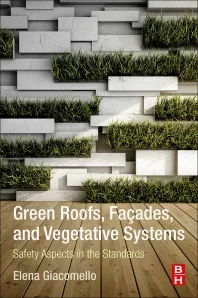Study: U.S. Extensive Green Roofing Systems Market to Grow 11% Annually Through 2023
CLEVELAND — Demand for extensive green roofing systems in the U.S. is forecast to grow 11 percent per year to $155 million in 2023, according to a new report.
"Green (Vegetative) Roofing" is the newly released study from The Freedonia Group, a Cleveland-based industry research firm.
The study indicates extensive systems will continue to account for the majority of vegetative roofing installations, supported by their ability to meet stormwater retention standards and other green building codes, reduce energy bills, and/or contribute to LEED points at a significantly lower cost than intensive assemblies.
Extensive systems are most often recommended for retrofit projects due to their significantly lighter weight than intensive green roofs. They are also frequently favored for use in harsh, arid climates, which benefit from these systems' lower maintenance and limited irrigation needs.
Through 2023, demand for complete green (vegetative) roofing systems is forecast to increase 11 percent per year to $278 million (16.9 million square feet).
The most significant advances are projected for cities that have adopted legislation mandating green roof installations and/or that offer related incentives (such as green infrastructure funding or credits for stormwater treatment fees).
While stormwater fee credits and other sustainable building incentives are the top reasons for installing green roofs, additional market drivers include the aesthetic and recreational benefits of green space amenities, urban heat island effect mitigation, improved building energy efficiency, and the contribution to improved air quality and biodiversity, according to Freedonia.
Of the four U.S. regions, the south is expected to remain the leading green roof market, bolstered by the relatively large number of installations each year in south Atlantic cities such as Washington, D.C., Atlanta, Baltimore, and Miami. Green roofing suppliers in these areas benefit from significant government support for vegetative roofing, as well as from warm climates that support investments to improve energy efficiency. Other key metropolitan markets are in the middle Atlantic (e.g., New York), Pacific (e.g., San Francisco, Portland), and east north central (e.g., Chicago) subregions.
While each U.S. region will continue to see green roof demand rise rapidly from a small base, the fastest market growth is anticipated in the west, supported by mandates for vegetative roofing passed in San Francisco and Portland. (A recent mandate in Denver was revised to require cool roofs instead of costlier vegetative systems.)
Looking for a reprint of this article?
From high-res PDFs to custom plaques, order your copy today!




